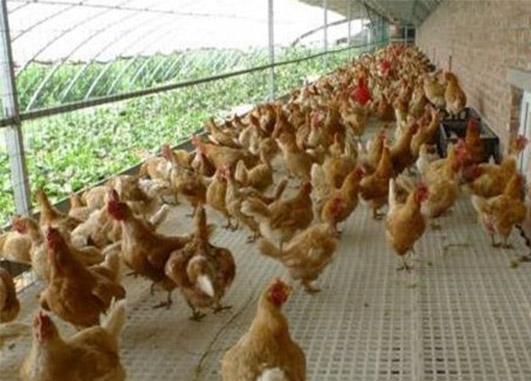With chicken market increasingly competitive, and farmers modernization consciousness gradually improve, more and more farmers to standardization, scale breeding mode, build the henhouse chicken farming became the caged equipment now farmers choose mode of breeding, so farmers in the building of the hen house should be how to build?
1. Site selection: avoid intensive farming areas with better water quality.
2. Feeding mode: cage raising in two stages: "raising young" and "laying eggs".
3. Chicken battery cages construction: it is recommended to raise 15,000 to 20,000 chickens per chicken coop, adopt closed chicken coop and broiler cage feeding equipment, cement floor, wall white cement batch white, automatic drinking water, feeding, ventilation, manure cleaning, etc.

First, the overall layout of the chicken farm:
1. General principles: from the perspective of facilitating epidemic prevention and organizational production. The divisional layout of the field area is the production area, office area, living area, auxiliary production area, and sewage treatment area.
2. Arrangement principle: According to the dominant wind direction, the topography and the flow direction are the living area, office area, auxiliary production area, production area and sewage treatment area. If the terrain is inconsistent with the wind direction, the dominant wind direction is dominant.
Second, the layout of the chicken farm: the overall plan should consider the factors such as the orientation of the chicken house, the spacing of the house, the road, sewage, fire prevention and epidemic prevention. The recommended design of 100,000 large-scale chicken farms is recommended to be arranged in 6 single or double row chicken houses. The single chicken house is 16,000 closed chicken houses. It is equipped with four rows of four aisles and three-tiered ladder cages. Curtains, ventilated windows, mechanical cleaning, mechanical feeding and automatic lighting, automatic drinking water system.
1. Single-roof house orientation: It adopts east-west or east-north (or west) 15 degrees, which is conducive to improving the winter temperature and avoiding summer solar radiation, using the dominant wind direction to improve the ventilation conditions of the house.
2. Chicken house spacing: two types of single-row houses and double-row houses. The spacing of the chicken houses is 10 to 20 meters for brooding and 10 to 15 meters for laying hens.
3. Chicken farm road: The chicken farm road is divided into two types: clean road and dirty road. The clean road is used for transporting feed, chicken and eggs in the field. The dirt is used to transport manure, dead chicken and sick chicken. The two must not be used interchangeably.
